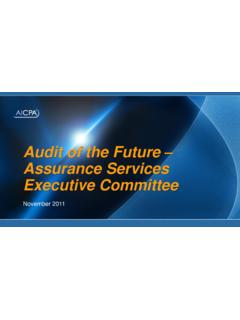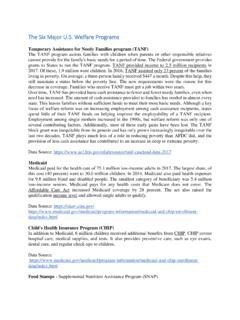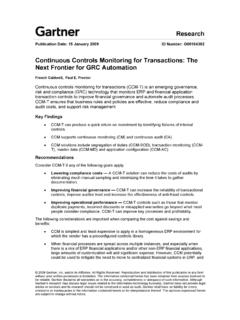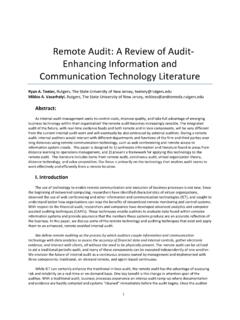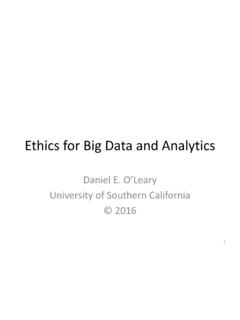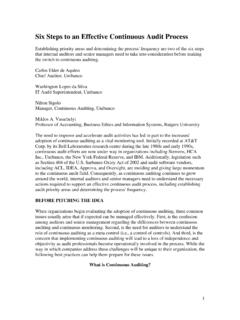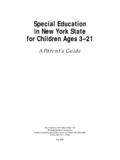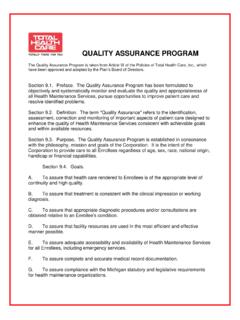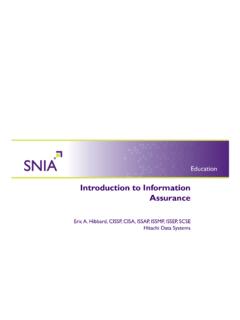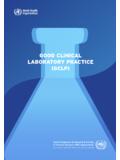Transcription of ASSURANCE SERVICES AND THE AUDIT HERITAGE
1 ASSURANCE SERVICES AND THE AUDIT HERITAGE Contents 1. The AICPA special Committee on ASSURANCE SERVICES 2. The Scope of New ASSURANCE SERVICES 3. ASSURANCE SERVICES in Current Practice 4. Competition 5. Opportunities 6. Customer Focus 7. The Practice of Accountancy 8. The Future 9. In Brief 10. New Growth on an Old Oak Tree What's new and what's rooted in the past. Some people will tell you that everything is rooted in the past, and they're right. But some things are more deeply rooted in the past than others. Irrigation for agriculture goes back at least to the ancients of the Middle East, but computers originated in the twentieth century. Pottery goes back to pre-historic times, but the electric food processor is a late-twentieth century device.
2 The horse-drawn carriage can be traced back to the domesticated horse and the chariot or cart, but the automobile, arguably the carriage's successor, is really a creature of the relatively recent internal combustion engine. Of course, the automobile is equally inconceivable without the wheel, which was well-known to the ancients. Sometimes tracing origins gets complicated. What does all this have to do with the AUDIT and ASSURANCE SERVICES ? We need perspective on what is a new departure and what is not. We cannot know where we are going without a fix on where we are. So I want to focus on the degree to which ASSURANCE SERVICES are a new departure and on the degree to which they are rooted in the past. The AICPA special Committee on ASSURANCE SERVICES I'll start with the work of the AICPA special Committee on ASSURANCE SERVICES (Committee).
3 Our task was to assess the economics of auditing and its likely future and to see what new SERVICES it made sense to add. That led us to defining new ASSURANCE SERVICES , but how we got there says something about the continuity between the two service types. Three influences on audits of financial statements have been fairly well known for a while, so it's not surprising the Committee gave them attention. First, trends tell us we can't expect rapid growth in demand for audits in the future, though there will be steady demand. The combined accounting and auditing revenue of large firms, adjusted for inflation, has been flat for nearly a decade. Second, AUDIT technology has been making auditing less labor intensive. Third, competition among auditing firms and cost-cutting pressure from corporate clients will help keep downward pressure on fees.
4 The three conditions mean that financial-statement auditing is no longer a growth industry. The Committee didn't discover these conditions. But it did confirm them, and its charge was to develop plans to respond to them. The Committee set out to build on the AUDIT and never wavered in pursuing that goal. The rationale was really quite simple. The AUDIT tradition is an enormous professional asset apart from AUDIT fees. Like idle money, it will decline in usefulness if it is ignored. But if properly invested in new SERVICES , it can yield great rewards. The Committee was convinced that market permission new ASSURANCE SERVICES begins with the financial statement AUDIT . It said the following: Firms' reputations for excellence in the AUDIT of GAAP financial statements are essential to successfully introducing new SERVICES .
5 Solid AUDIT performance underscores independence and objectivity, a powerful competitive advantage. Market permissions would be severely curtailed by public distrust of financial statement audits. With this in mind and after study, the Committee made suggestions to maintain and strengthen the AUDIT . It focused on the need to maintain public confidence in the treatment of fraud, illegal acts, and financial distress. These are not new problems. They have received attention before, some recently and very constructively; but it is nevertheless true that public concern on these issues can damage the auditor's image and any hopes of the extended market permissions that go with it. The Committee also made suggestions on the need to adapt AUDIT tools to the changes in the environment being created by information technology.
6 The factors leading to more heavily computerized reporting to investors will eventually lead to user access to corporate databases with real-time ASSURANCE by "auditors." Such access will take the place of periodic paper reports. Transforming financial reporting in this way will necessitate a transformation in auditing. There is good reason to believe user access to corporate databases is in our future. Companies are keenly aware of the importance of providing information to capital suppliers; they know their access to capital depends on it; and they know that the cost of capital is importantly determined by it. There's recent research evidence confirming the cost-of-capital benefits of supplying information. Last year Christine Botosan showed (in the July 1997 Accounting Review) that greater disclosure is associated with a lower cost of equity capital--nearly a ten percent capital cost advantage to firms making the most disclosure.
7 So there are incentives for companies to satisfy the information needs of their investors and creditors, and there's a basis in the new research to believe awareness of those incentives will increase. Add to this the declining cost of processing and reporting power, growing systems integration, and networking that merely a decade ago seemed visionary. These factors mean that real-time access to corporate databases is becoming more feasible every day. If it becomes a reality, as seems likely, ASSURANCE will be needed on the systems. If independent accountants don't supply it, others will. To be ready and to help the evolution toward database access, auditors had better lose no time refining their systems-evaluation tools. All this means the AUDIT as we now know it is going to be transformed.
8 It will still be an AUDIT in its purpose and traditions. Users of corporate data will still be receiving ASSURANCE on the reliability of the information they need for investment and credit decisions, and the fundamentals of the AUDIT 's economics will be the same. But the AUDIT will change. It hasn't been static in the past, and it won't be in the future. The Scope of New ASSURANCE SERVICES Let's assume that auditors do all that's necessary to maintain the AUDIT as a source of profitable work and as a professional asset that can help create market permissions for new SERVICES . What is the scope of the additional SERVICES that might be offered? The Committee examined changing conditions affecting the marketplace and studied users' decision-making needs to identify new SERVICES , and it developed a definition of ASSURANCE SERVICES that builds on the AUDIT tradition.
9 It's easy to see the economic bridge between new ASSURANCE SERVICES based on future conditions and the financial-statement AUDIT . The value of the financial-statement AUDIT derives from the marketplace need for high quality information for investment decisions. The AUDIT provides ASSURANCE that an information set presented to investors and creditors is reliable. But the marketplace need for high quality decision-making information is far greater than just the need for reliable historical-cost-based financial statements. There are all sorts of decisions, all sorts of decision makers, and an infinite number of possible information sets in addition to historical cost-based financial statements. What's more, the decisions and the information sets that can serve them are changing and multiplying and promise to continue to do so.
10 With this awareness, the Committee defined ASSURANCE SERVICES as "independent professional SERVICES that improve the quality of information, or its context, for decision makers." The definition captures essential elements of the AUDIT function--independence and improving information for decision making. Independence is the most important link between the AUDIT tradition and new ASSURANCE SERVICES . Of all the values accountants bring to the AUDIT , independence is probably most prized. It will be equally present for ASSURANCE SERVICES . There can be no conflict between independence in the performance of an AUDIT and the performance of new ASSURANCE SERVICES , because independence is required for both. In a number of ways the definition expands on the AUDIT function.
